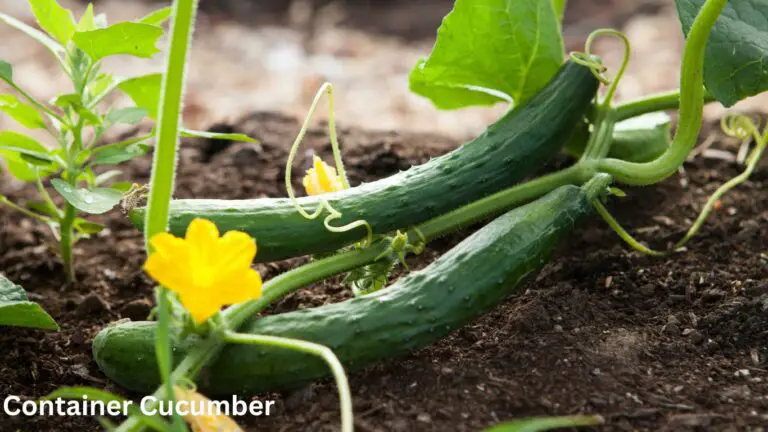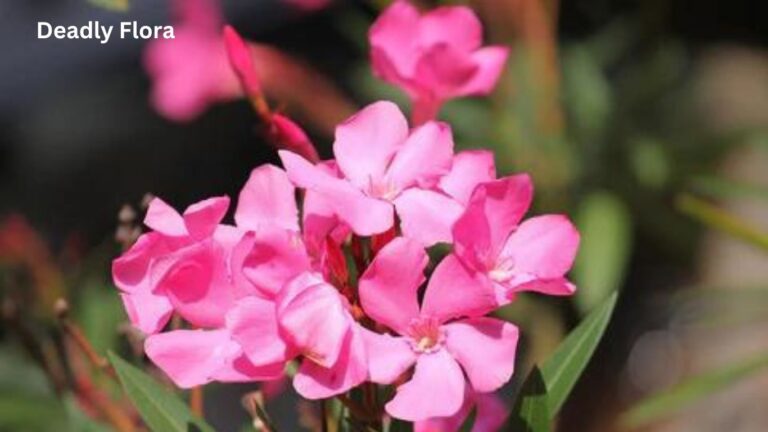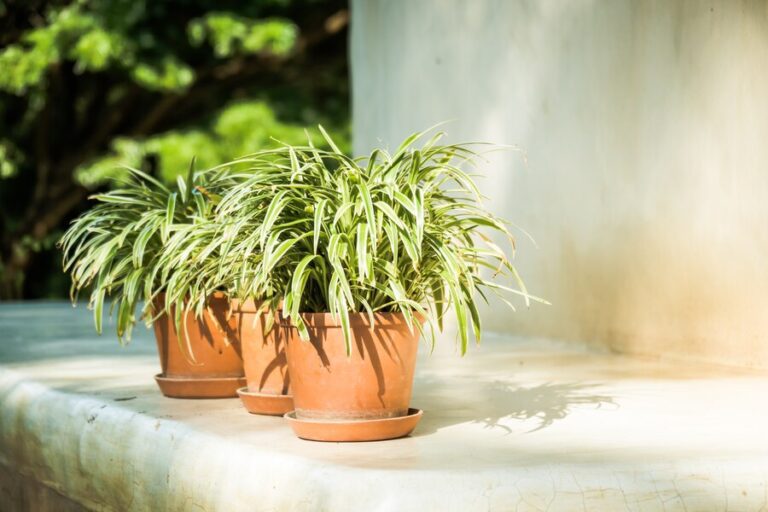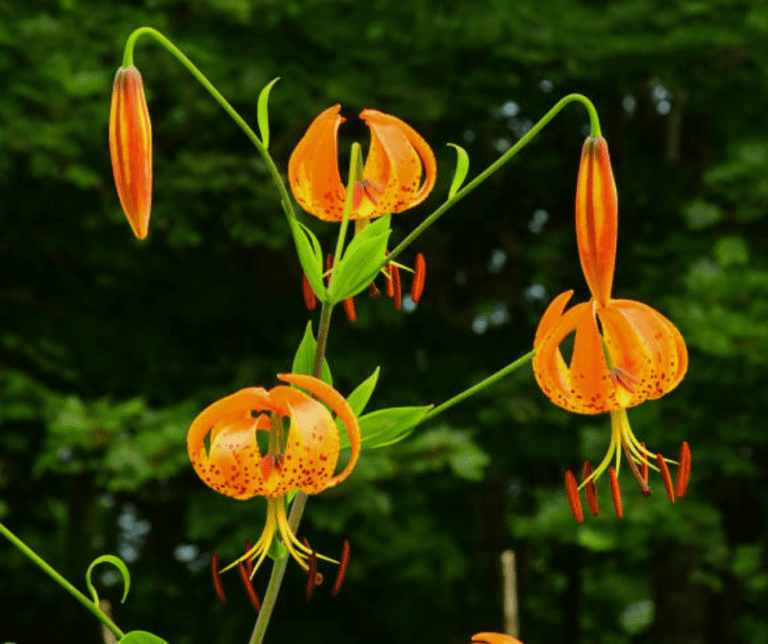Indoor Gardening for Beginners: Essential Tips and Tricks
Table of Contents
Understanding the Benefits of Indoor Gardening
Indoor gardening, also known as indoor horticulture or indoor cultivation, is the practice of growing plants inside a controlled environment. This increasingly popular gardening method offers numerous benefits that go beyond simply beautifying your living space. One of the key advantages of indoor gardening is the ability to grow plants year-round, regardless of the external weather conditions. This means that you can enjoy fresh herbs, vegetables, and flowers even during the colder months when outdoor gardening is not possible.
Additionally, indoor gardening provides an opportunity to have a green oasis in the urban jungle. With limited outdoor space, many city dwellers are turning to indoor gardening as a way to reconnect with nature and bring a sense of calm and tranquility into their homes. Studies have shown that being surrounded by plants indoors can improve air quality, reduce stress levels, enhance mood, and even increase productivity. Indoor gardening also allows you to have greater control over the growing conditions, from temperature and humidity to lighting and watering, thus enabling you to create the ideal environment for your plants to thrive. Whether you are a seasoned gardener looking to expand your skills or a beginner with a green thumb, exploring the world of indoor gardening can undoubtedly offer a host of benefits for both your physical and mental well-being.
Selecting the Right Plants for Indoor Gardening
Indoor gardening offers a multitude of benefits, including the ability to enhance your living space, improve air quality, and even provide a source of fresh herbs and vegetables year-round. However, selecting the right plants for indoor gardening is crucial to ensure successful and thriving growth.
When choosing plants for indoor gardening, it’s important to consider several factors. First, assess the amount of available space in your indoor environment. This will help you determine the size and growth habits of the plants that will work best. Additionally, consider the lighting conditions in your space, as different plants have varying light requirements. Some plants, like succulents, thrive in bright, direct sunlight, while others, such as ferns, prefer filtered or indirect light. Understanding the lighting needs of your chosen plants will significantly impact their overall health and growth.
Furthermore, consider the level of maintenance and care you are willing to provide. Some plants may require more attention, such as regular watering or specific humidity levels, while others are more resilient and low-maintenance. Additionally, take into account your own gardening experience and knowledge. If you are a novice gardener, selecting easy-to-care-for plants can help you build confidence and achieve successful results.
Lastly, consider the purpose or desired outcome of your indoor garden. Are you aiming to create a lush green oasis or focusing more on practicality with herbs and vegetables? By clarifying your goals, you can choose plants that align with your vision and ultimately create an indoor garden that brings you joy and satisfaction.
In conclusion, selecting the right plants for indoor gardening requires careful consideration of your available space, lighting conditions, maintenance capabilities, and desired outcomes. By taking these factors into account, you can create an indoor garden that not only flourishes but also brings beauty, freshness, and joy to your living space. So, now that you have an understanding of the factors to consider when selecting plants for indoor gardening, let’s explore some popular plant options that thrive indoors.
Creating a Suitable Indoor Environment for Plants
Creating an optimal indoor environment for your plants is crucial to their health and growth. In order to thrive, plants require the right combination of temperature, humidity, and air circulation. Maintaining a suitable environment will not only provide your plants with the conditions they need, but it will also help prevent common issues like disease, pests, and stunted growth.
First and foremost, it is important to consider the temperature in your indoor garden. Most indoor plants thrive in temperatures between 65 to 75 degrees Fahrenheit (18 to 24 degrees Celsius). However, it is necessary to research the specific temperature requirements of the plants you wish to grow, as some may have different preferences. It is also important to avoid placing your plants in areas that experience fluctuating temperatures, such as near drafts or heating vents.
Another factor to consider is humidity. Many indoor plants prefer a moderately humid environment, typically between 50 to 60 percent. To achieve this, you can use a humidifier or place trays of water near your plants to increase moisture in the air. On the other hand, if your plants require a drier environment, such as certain succulents, you can use a dehumidifier or allow for proper airflow to reduce moisture levels.
In addition to temperature and humidity, proper air circulation is essential for healthy indoor plants. Poor air circulation can lead to stagnant air, which can encourage the growth of mold and mildew, as well as attract pests. To ensure adequate airflow, you can use fans or open windows periodically to allow fresh air into your indoor garden. However, it is important to avoid placing your plants in areas with strong drafts, as this can damage their leaves and roots.
In conclusion, creating a suitable indoor environment for your plants requires careful consideration of temperature, humidity, and air circulation. By providing the optimal conditions, you can promote healthy growth and prevent common issues. Remember to research the specific requirements of your plants and monitor the environment regularly to make any necessary adjustments. With the right environment, your indoor garden will flourish and bring joy and beauty to your home.
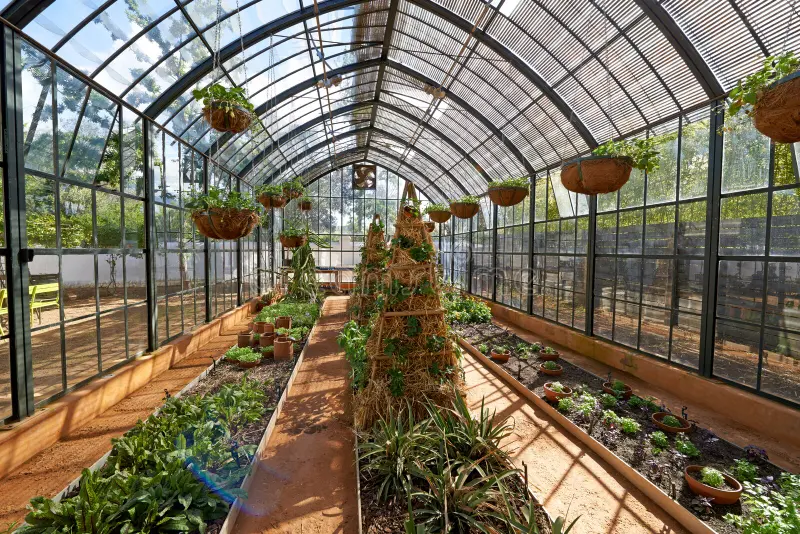
Choosing the Ideal Containers for Indoor Gardening
When it comes to indoor gardening, choosing the right containers is crucial for the health and success of your plants. The ideal container should not only provide adequate space for root growth, but also offer good drainage and ventilation. One option to consider is terracotta pots, which are not only aesthetically pleasing but also porous, allowing for better air circulation and moisture control. Another popular choice is plastic pots, which are lightweight, inexpensive, and come in various sizes and styles. They are also non-porous, which can help retain moisture for plants that require more frequent watering. Additionally, fabric pots have gained popularity in recent years for their excellent drainage and aeration properties. These soft-sided containers are made from breathable fabric, promoting healthy root development and preventing waterlogged soil. By choosing the right container, you can provide a conducive environment for your indoor plants to thrive.
In addition to the type of container, size is another important factor to consider. It is essential to choose a container that is appropriately sized for your specific plant’s needs. If a container is too small, the plant’s roots may become root-bound, leading to stunted growth. On the other hand, if the container is too large, excess soil and moisture may cause root rot. As a general rule of thumb, select a container that allows for at least an inch or two of space between the plant’s root ball and the edges of the pot. This will give the roots enough room to spread out and absorb nutrients efficiently. Keep in mind that certain plants may require larger containers, especially those with extensive root systems or that grow rapidly. Carefully considering the size of your containers will help create a healthy and balanced environment for your indoor garden.
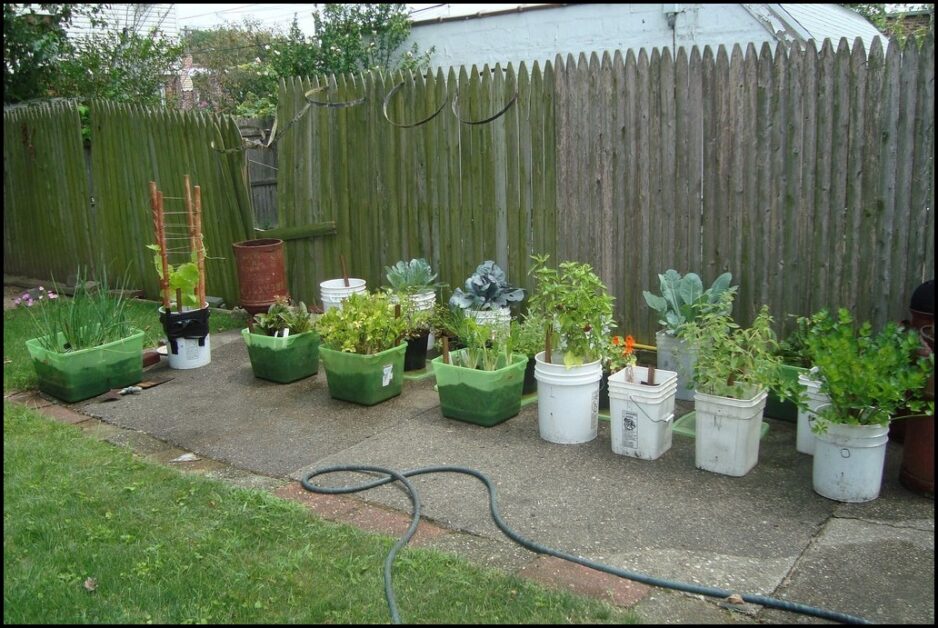
Exploring Different Types of Soil for Indoor Plants
When it comes to indoor gardening, selecting the right type of soil is crucial for the health and growth of your plants. Unlike outdoor gardening, where plants can benefit from the natural properties of the soil, indoor plants rely on the soil you provide for them. There are several different types of soil that are commonly used for indoor gardening, each with its own unique properties and benefits.
One popular option is potting soil, also known as potting mix or container mix. This type of soil is specifically formulated for potted plants and typically consists of a combination of peat moss, vermiculite or perlite, and compost. Potting soil is well-draining and lightweight, which helps to prevent overwatering and allows air to reach the plant’s roots. It also contains essential nutrients that plants need to thrive.
Another option is cactus soil, which is specially designed for succulents and other plants that prefer dry conditions. Cactus soil is usually composed of a mix of regular potting soil and sand, which helps to improve drainage and prevent the roots from sitting in water. This type of soil also provides better aeration, which is important for preventing root rot in succulents.
For those looking for a soilless option, hydroponic growing media can be used. Hydroponics is a method of growing plants in water without soil, and there are various types of media that can be used to support the plants. Some examples include clay pellets, coco coir, and rockwool. These materials provide excellent drainage, allow for the easy absorption of water and nutrients, and help to maintain a stable pH level in the root zone.
Overall, the choice of soil for indoor plants depends on the specific needs of your plants and the growing conditions you can provide. It’s recommended to research the requirements of your plants and consult with gardening experts to determine the most suitable soil option. By understanding the different types of soil available and their respective benefits, you can create the ideal environment for your indoor garden and ensure the healthy growth of your plants.
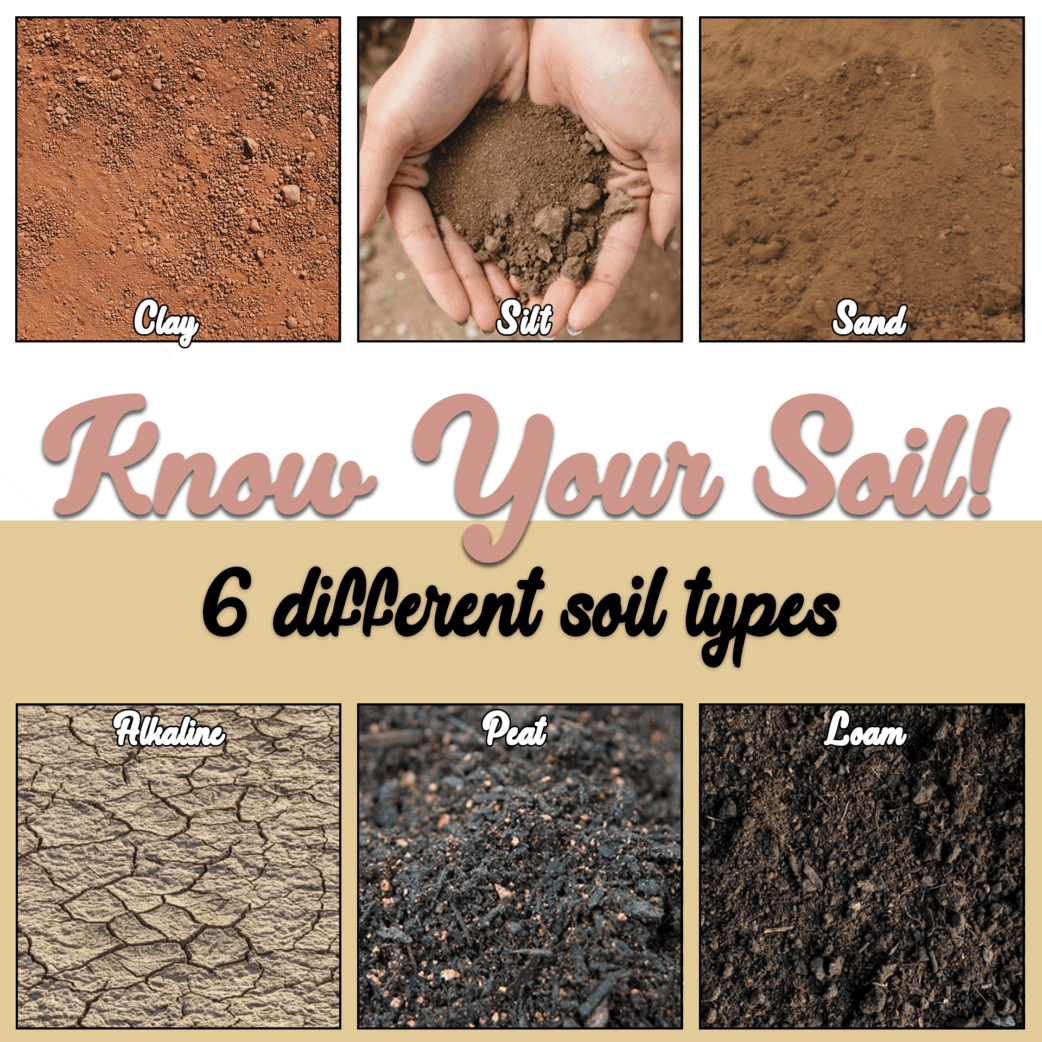
Learning the Basics of Watering Indoor Plants
When it comes to watering indoor plants, it’s crucial to strike the right balance. Over-watering can lead to root rot and other issues, while under-watering can cause the plants to wither and die. Understanding the basics of watering indoor plants is essential for their overall health and growth.
One important factor to consider is the type of plant you are dealing with. Different plants have different watering needs. Some plants, such as succulents and cacti, prefer drier conditions and can tolerate longer periods between watering. On the other hand, tropical plants like ferns and orchids thrive in more humid environments and require more frequent watering. It’s essential to research the specific watering requirements of each plant and create a watering schedule accordingly.
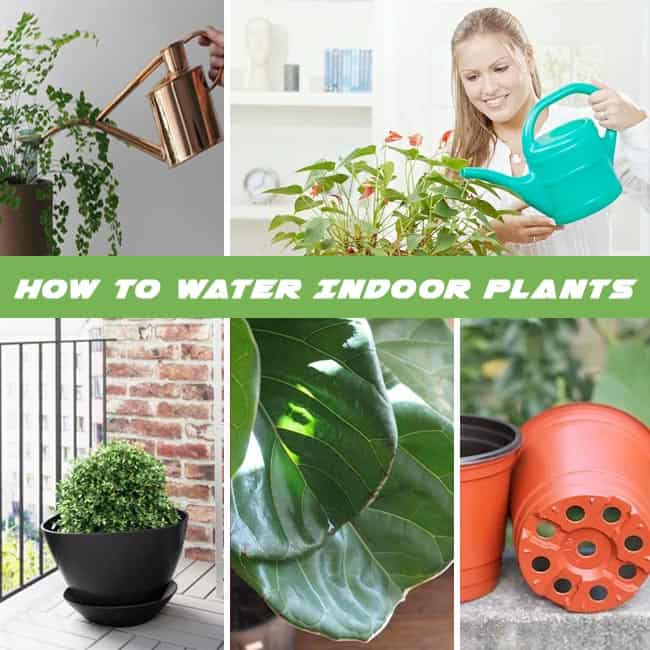
Providing Adequate Lighting for Indoor Gardens
Indoor plants require adequate lighting to thrive and grow properly. In nature, plants receive sunlight, which provides them with the energy they need for photosynthesis. When it comes to indoor gardening, replicating the natural lighting conditions becomes essential.
When selecting lighting for your indoor garden, it is important to consider the light intensity, spectrum, and duration. Light intensity refers to the brightness of the light, which can be measured in foot-candles or lux. Different plants have different light needs, so it is crucial to choose the appropriate light intensity for each specific plant variety. The light spectrum is also important as it affects plant growth and development. Blue light promotes vegetative growth, while red light stimulates flowering and fruiting. Finally, the duration of light exposure is crucial as it mimics the natural day-night cycle. Generally, most indoor plants require 12-16 hours of light per day for optimal growth.
To provide adequate lighting for your indoor garden, there are different options available. Natural sunlight is the most ideal, but if you lack access to sufficient natural light, artificial lighting can be used. LED grow lights are popular among indoor gardeners due to their energy efficiency and the ability to tailor the light spectrum to suit specific plant needs. High-intensity discharge (HID) lights, such as metal halide and high-pressure sodium lamps, are also commonly used for indoor gardening. It is recommended to position the lights above the plants to ensure sufficient coverage and to periodically adjust their height as the plants grow. By providing the appropriate light intensity, spectrum, and duration, you can ensure your indoor plants receive the lighting they need to thrive and flourish.
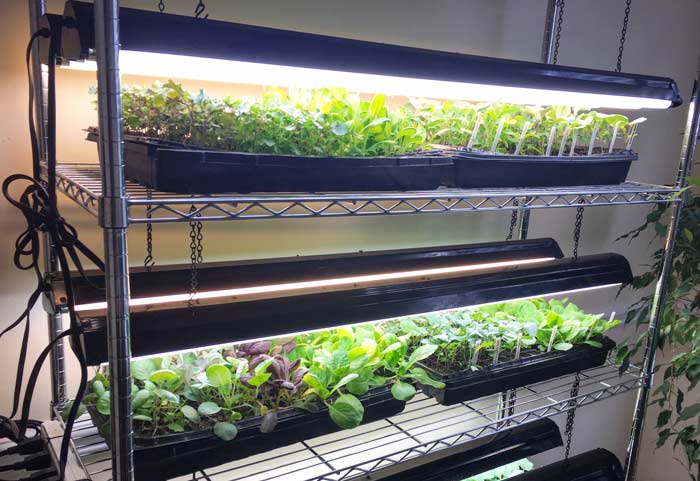
Managing Temperature and Humidity for Indoor Gardening Success
Temperature and humidity are critical factors to consider when it comes to achieving success in indoor gardening. Maintaining the right temperature and humidity levels can greatly impact the growth and overall health of your plants.
When it comes to temperature, it is important to remember that different plants have different temperature preferences. Some plants thrive in cooler temperatures, while others prefer warmer conditions. It is crucial to research and understand the specific temperature requirements of the plants you are growing. Generally, a temperature range between 65 to 75 degrees Fahrenheit (18 to 24 degrees Celsius) during the day and slightly cooler temperatures at night is ideal for most indoor plants. However, it is essential to monitor and adjust the temperature according to the specific needs of your plants.
Humidity, on the other hand, refers to the amount of water vapor present in the air. Similar to temperature, different plants have different humidity requirements. While some plants thrive in higher humidity levels, others prefer drier conditions. It is essential to provide the appropriate humidity level based on the plants you are cultivating. A humidity level of around 40 to 60 percent is generally suitable for most indoor plants. To maintain the desired humidity, you can use a humidifier or mister to increase humidity or a dehumidifier to reduce it, depending on the needs of your plants. Additionally, grouping plants together can help create a microclimate with higher humidity, as the plants release moisture through transpiration.
Properly managing temperature and humidity in your indoor garden is key to promoting optimal growth and preventing common issues such as wilting, root rot, and mold. By closely monitoring and adjusting these factors, you can create a favorable environment that supports the health and well-being of your plants, setting the stage for a thriving indoor garden. As you embark on your indoor gardening journey, remember to regularly check and fine-tune the temperature and humidity levels to ensure the best possible conditions for your plants.
Nurturing Indoor Plants with Proper Nutrients
Proper nutrition is essential for the healthy growth and development of indoor plants. Just like humans, plants require a balanced diet to thrive. Providing your indoor plants with the right nutrients will not only improve their overall health but also enhance their ability to resist diseases and pests.
When it comes to nurturing indoor plants with proper nutrients, the key is understanding their specific nutritional needs. Different plants have varying requirements, and it is important to cater to those needs accordingly. The three primary macronutrients that all plants need are nitrogen, phosphorus, and potassium. Nitrogen is responsible for promoting leaf and stem growth, phosphorus helps in root development and flowering, while potassium enhances overall plant health and disease resistance.
In addition to these macronutrients, plants also require a range of micronutrients such as iron, magnesium, calcium, and zinc, among others. These micronutrients play a crucial role in various metabolic processes within the plant, affecting its overall vitality and resilience. It is important to ensure that these nutrients are available in the right proportions for optimal plant growth.
Understanding the nutrient requirements of your indoor plants can be achieved through thorough research and consultation with gardening experts. By providing your plants with the essential nutrients they need, you can create an environment that supports their growth and helps them flourish.
Preventing and Managing Common Pests in Indoor Gardens
Preventing and managing common pests in indoor gardens is crucial to maintaining the health and vitality of your plants. While indoor gardening provides a controlled environment that can help reduce the risk of pest infestations compared to outdoor gardens, pests can still find their way inside and wreak havoc if left unchecked.
One effective method of pest prevention is regular inspection of your plants. Take the time to closely examine the leaves, stems, and soil for any signs of pests or damage. Early detection is key to effectively managing infestations. If you notice any pests, such as aphids, mealybugs, or spider mites, there are several organic and chemical options available to help control them. Natural solutions like neem oil or insecticidal soaps can be applied directly to affected areas to target pests while minimizing harm to your plants.
Another important aspect of pest management is maintaining a clean and sanitary environment. Regularly remove any dead leaves or debris that may accumulate in the garden, as they can attract pests and provide hiding places for them. Additionally, keeping your indoor space well-ventilated can help prevent the build-up of humidity, which can create a favorable environment for pests. Implementing pest traps, such as sticky traps or yellow boards, can also be an effective way to monitor and control pest populations. By employing these proactive measures, you can ensure a pest-free indoor garden and enjoy healthier, thriving plants.
Essential Tools and Equipment for Indoor Gardening
When it comes to indoor gardening, having the right tools and equipment is essential for success. These tools not only make your gardening tasks easier but also contribute to the overall health and vitality of your plants. Here are some essential tools and equipment that every indoor gardener should have:
1. Hand Trowel: A hand trowel is a must-have tool for any gardener. It is used for digging small holes, transplanting seedlings, and removing weeds. Look for a trowel with a sturdy handle and a sharp, stainless steel blade for durability and efficient digging.
2. Pruning Shears: Pruning shears, also known as secateurs, are necessary for maintaining the health and appearance of your indoor plants. They are used for trimming damaged or dead leaves, shaping plants, and removing overgrown branches. Choose a pair of shears with a comfortable grip and a sharp, bypass blade for clean cuts without damaging the plant tissue.
3. Watering Can: Proper watering is crucial for the health of your indoor plants, and a good watering can make the task much easier. Look for a watering can with a long spout that allows you to reach all areas of your plants without causing water spillage. Additionally, consider choosing a can with a detachable rose attachment for gentle and even watering.
4. Mist Sprayer: Many indoor plants benefit from higher humidity levels, especially those that originated from tropical regions. A mist sprayer allows you to mimic a humid environment by creating a fine mist that settles on the plant’s foliage. This helps in maintaining the moisture balance and preventing dryness in the air.
5. Grow Lights: Natural sunlight may not always be sufficient for indoor plants, especially if you have limited access to windows or if your plants have specific light requirements. In such cases, using grow lights becomes essential. LED lights are energy-efficient options that provide the necessary light spectrum for optimal plant growth.
By equipping yourself with these essential tools and equipment, you will be well-prepared to embark on your indoor gardening journey with confidence and success. Remember to choose high-quality tools that are comfortable to use and built to last, ensuring that you can enjoy the joys and rewards of indoor gardening for years to come.
Planning and Designing Your Indoor Garden Space
When it comes to planning and designing your indoor garden space, there are several key factors to consider. First and foremost, you’ll want to assess the available space and determine how much room you have to work with. This will help guide your decisions on the types and sizes of plants you can accommodate.
Next, think about the layout and aesthetics of your indoor garden. Consider how the plants will be arranged and what visual impact you want to achieve. You may choose to create a focal point with a large, statement plant or create a balanced composition with a variety of different plants.
Additionally, take into account the practical aspects of your indoor garden design. Consider factors such as accessibility for watering and maintenance, as well as the availability of natural light and other environmental conditions necessary for plant growth. This may involve positioning your plants near windows or installing artificial lighting systems.
Ultimately, the key to successful planning and designing of your indoor garden space is finding the right balance between functionality and beauty. By carefully considering the available space, layout, and practical considerations, you can create an indoor garden that not only enhances your living space but also promotes the health and vitality of your plants.
Certainly! When planning and designing your indoor garden space, consider the following tips to create a thriving and beautiful environment for your plants:
| Aspect | Considerations |
|---|---|
| Style of Garden | – Choose between container gardening (using planters with traditional soil) or hydroponic gardening (using fertilized water and a non-soil medium arranged vertically). – Container gardens allow flexibility and can grow any type of plant. – Hydroponic gardens are efficient for producing vegetables. |
| Selecting the Right Space | – Look for an area with ample sunlight, ideally near east or west-facing windows. – Avoid cold rooms (like attics or garages) that can harm plant growth. – Keep away from air vents or fans that may dry out plants. |
| Environmental Control | – Monitor and control air temperature, water frequency, and soil conditions. – Use tools like soil heat mats to maintain optimal soil temperatures (around 75–85°F or 24–29°C). |
| Plant Selection | – Choose plants that thrive indoors. – Consider light requirements, space, and maintenance needs. |
| Containers | – Select appropriate containers or planters based on plant size and aesthetics. – Ensure proper drainage. |
| Indoor Potting Soil | – Use high-quality indoor potting soil for optimal plant growth. |
| Humidity Levels | – Maintain adequate humidity levels for your plant species. – Consider using a humidity tray or misting plants. |
Remember, each indoor garden is unique, so adapt these guidelines to suit your specific space and preferences.
Understanding Plant Propagation Techniques for Indoor Gardening
Propagation is a fundamental technique in indoor gardening that allows gardeners to reproduce plants from existing ones. This method is particularly useful when you want to expand your collection or share your favorite plants with others. There are several plant propagation techniques that can be employed in indoor gardening, each with its own benefits and considerations.
One common technique is stem cutting, which involves taking a piece of a healthy plant stem and encouraging it to develop roots and grow into a new plant. This method is widely used for a variety of plants, including herbs, succulents, and flowering plants. Stem cutting is relatively easy and can be done using simple tools like pruning shears. By providing the right conditions, such as moisture and appropriate soil mix, you can encourage rapid root growth and the development of a new plant.
Another propagation technique is leaf cutting, which is particularly effective for plants with fleshy leaves, such as African violets and jade plants. With this method, a healthy leaf is cut from the parent plant and placed in a rooting medium. Over time, the leaf develops roots and eventually gives rise to a new individual plant. Leaf cutting is a great way to produce multiple plants from a single leaf and is often used by indoor gardeners looking to expand their collection without purchasing new plants.
Overall, understanding propagation techniques for indoor gardening can greatly enhance your gardening experience. Whether you choose to propagate through stem cutting, leaf cutting, or other methods, it’s essential to provide the right conditions and care for the new plants to ensure their successful growth. By experimenting with different techniques and observing the unique needs of each plant species, you can expand your indoor garden and enjoy the satisfaction of nurturing new life.
Pruning and Trimming Indoor Plants for Optimal Growth
Pruning and trimming are essential practices for maintaining the optimal growth of indoor plants. By removing dead, damaged, or overgrown parts, pruning helps stimulate new growth and promotes a healthier plant overall. Trimming, on the other hand, focuses on shaping the plant and maintaining its desired size and appearance. These techniques not only contribute to the aesthetic appeal of indoor gardens but also play a vital role in the plant’s ability to thrive.
When it comes to pruning indoor plants, it’s crucial to understand the specific needs of each plant species. Some plants, such as succulents or cacti, may require minimal pruning, while others, like vining plants or shrubs, may need more frequent and meticulous pruning. It is important to use sterilized pruning tools to prevent the spread of diseases or pests. By making clean cuts just above a leaf node or bud, you can help direct the plant’s energy towards new growth. Additionally, removing any crossing or crowded branches can improve airflow and reduce the risk of fungal diseases.
As for trimming indoor plants, the key is to strike a balance between maintaining the desired size and shape and ensuring the plant’s overall health. Regularly trimming back excessive growth can prevent plants from becoming leggy or sprawling. This practice also encourages lateral branching, which leads to a fuller and more compact appearance. However, it is important to avoid over-pruning, as excessive removal of foliage can weaken the plant and hinder its ability to photosynthesize effectively. By following proper pruning and trimming techniques, indoor gardeners can enhance the beauty and vitality of their plants, creating a thriving and visually pleasing indoor oasis.
Troubleshooting Common Issues in Indoor Gardening
Indoor gardening can be a rewarding and enjoyable experience, but like any form of gardening, it can come with its fair share of challenges. Understanding and troubleshooting common issues is essential to maintaining the health and vitality of your indoor plants. One common issue that indoor gardeners face is overwatering. While it may seem like giving your plants plenty of water is beneficial, it can actually lead to root rot and other problems. To avoid this, make sure to check the moisture level of the soil before watering and only water when it is dry to the touch.
Another common issue in indoor gardening is inadequate lighting. Plants need sufficient light to photosynthesize and grow properly. If your plants are not receiving enough light, they may become leggy and weak, or fail to bloom altogether. To remedy this, consider placing your indoor garden in a well-lit area, such as near a window, or invest in artificial grow lights specifically designed for indoor plants. Additionally, rotating your plants regularly can ensure that all sides receive equal exposure to light, preventing one-sided growth.
Certainly! Let’s explore common issues in indoor gardening and provide troubleshooting tips to help your indoor garden thrive:
| Issue | Symptoms | Identification | Treatment |
|---|---|---|---|
| Pest Infestations | – Yellowing or wilting leaves. – Sticky residue on plant surfaces. – Visible insects on or around plants. | – Look for signs of pests like spider mites, aphids, whiteflies, or mealybugs. | – Use natural pest control methods: insecticidal soap, neem oil, or sticky traps. |
| Nutrient Deficiencies | – Yellowing or browning leaves. – Stunted growth. – Leaf drop. | – Refer to a plant nutrient deficiency chart based on symptoms. | – Provide appropriate fertilization with organic options like bone meal, fish emulsion, or seaweed extracts. |
| Over or Under-Watering | – Overwatering: Yellowing or wilting leaves, root rot, fungal growth. – Under-watering: Dry, brittle leaves. | – Regularly check soil moisture levels. Adjust watering accordingly. | – Ensure plants receive the right amount of water for their needs. |
| Poor Light Conditions | – Leggy growth. – Pale leaves. – Stunted growth. | – Ensure plants receive at least six hours of sunlight per day or supplement with artificial lighting. | – Adjust plant placement or lighting as needed. |
| Preventive Measures | – Choose appropriate plants for indoor conditions. – Use high-quality soil and well-draining pots. | – Consider light, temperature, and humidity requirements. | – Maintain proper care and observe your plants regularly. |
Remember, each indoor garden is unique, so adapt these troubleshooting tips to your specific plants and environment.
Embracing the Joys and Rewards of Indoor Gardening
Indoor gardening offers a multitude of joys and rewards that can be both fulfilling and gratifying for gardening enthusiasts. One of the most significant benefits of indoor gardening is the ability to cultivate plants year-round, regardless of weather conditions. Whether you live in a region with harsh winters or scorching summers, indoor gardening allows you to nurture your green thumb and maintain a thriving garden regardless of the season.
Not only does indoor gardening provide a sanctuary for plants, but it also offers a sanctuary for the gardener. Studies have shown that spending time surrounded by nature and plants can have a positive impact on mental health and overall well-being. Indoor gardens provide a tranquil and peaceful space, promoting relaxation, reducing stress levels, and improving mood. The act of nurturing plants and witnessing their growth and development can be a rewarding and therapeutic experience, bringing a sense of fulfillment and accomplishment to even the most novice gardener.
In addition to the mental and emotional benefits, indoor gardening can also have a positive impact on the physical environment. Indoor plants are known for their air-purifying qualities, eliminating toxins and improving air quality in enclosed spaces. They absorb carbon dioxide and release oxygen, creating a healthier and more breathable atmosphere in your home. Furthermore, indoor gardens can add a touch of natural beauty and aesthetic appeal to any room, enhancing the overall ambiance and creating a refreshing oasis within the indoor space.
Whether you are a seasoned gardener looking to expand your horticultural endeavors or a gardening novice wanting to explore the art of indoor gardening, embracing this rewarding practice can bring numerous joys and benefits to your life. The ability to tend to plants throughout the year, the positive impact on mental health and well-being, and the environmental benefits are just a few reasons why indoor gardening is gaining popularity among gardening enthusiasts. So, why not embark on this transformative journey and dive into the world of indoor gardening? Your plants and your well-being will undoubtedly thank you.
For better understanding watch the below video.
Can indoor gardening help improve indoor air quality?
Yes, indoor gardening can help improve indoor air quality by acting as natural air purifiers and reducing the levels of harmful pollutants in the air.
How often should I water my indoor plants?
The frequency of watering indoor plants depends on various factors such as plant type, size, environmental conditions, and the type of soil used. It is generally recommended to water indoor plants when the top inch of soil feels dry to the touch.
Do indoor plants require fertilizers?
Yes, indoor plants do require fertilizers to provide them with essential nutrients for healthy growth. However, it is important to choose the right type of fertilizer and follow the instructions for application to avoid over-fertilization.
What are some common pests that can affect indoor plants?
Common pests that can affect indoor plants include aphids, mealybugs, spider mites, and fungus gnats. Regular inspection and early detection can help prevent and manage these pests effectively.
What tools and equipment are essential for indoor gardening?
Some essential tools and equipment for indoor gardening include a watering can, pruning shears, gardening gloves, a spray bottle, a trowel, and a plant mister.
How can I propagate indoor plants?
There are various propagation techniques for indoor plants, including stem cuttings, leaf cuttings, division, and seed propagation. Each technique has its own requirements and methods, which can be learned and practiced for successful propagation.
What should I do if my indoor plants are not growing well?
If your indoor plants are not growing well, you may need to evaluate factors such as lighting, watering, temperature, and nutrient levels. Adjusting these factors accordingly and providing proper care can help improve the growth of your indoor plants.
How can I prevent diseases in my indoor garden?
To prevent diseases in your indoor garden, it is important to maintain good hygiene by regularly cleaning and disinfecting your gardening tools and containers. Avoid overwatering and ensure proper air circulation to reduce the risk of fungal diseases.
Can I use artificial lighting for indoor gardening?
Yes, artificial lighting can be used for indoor gardening, especially in spaces with limited natural light. LED grow lights are commonly used as they provide the necessary spectrum of light for plant growth.
What are some benefits of indoor gardening?
Indoor gardening offers numerous benefits, including stress reduction, improved air quality, aesthetic enhancement of indoor spaces, opportunity for gardening in urban areas, and the satisfaction of nurturing plants and watching them thrive.

Nicole Burke is a dynamic writer at SouthElMonteHydroponics, fueled by her passion for horticulture and environmental sustainability. Armed with a degree in Environmental Science from a renowned institution, Nicole’s expertise lies in hydroponic gardening, organic farming, and biodiversity conservation. Her insatiable curiosity and love for nature drive her to explore innovative techniques in hydroponics, seeking to revolutionize the way we grow crops in urban environments. Nicole’s writing reflects her deep commitment to promoting eco-conscious practices and fostering a deeper connection between humans and the natural world. Through her engaging storytelling, she inspires others to embrace sustainable living and harness the power of hydroponics for a greener future.

